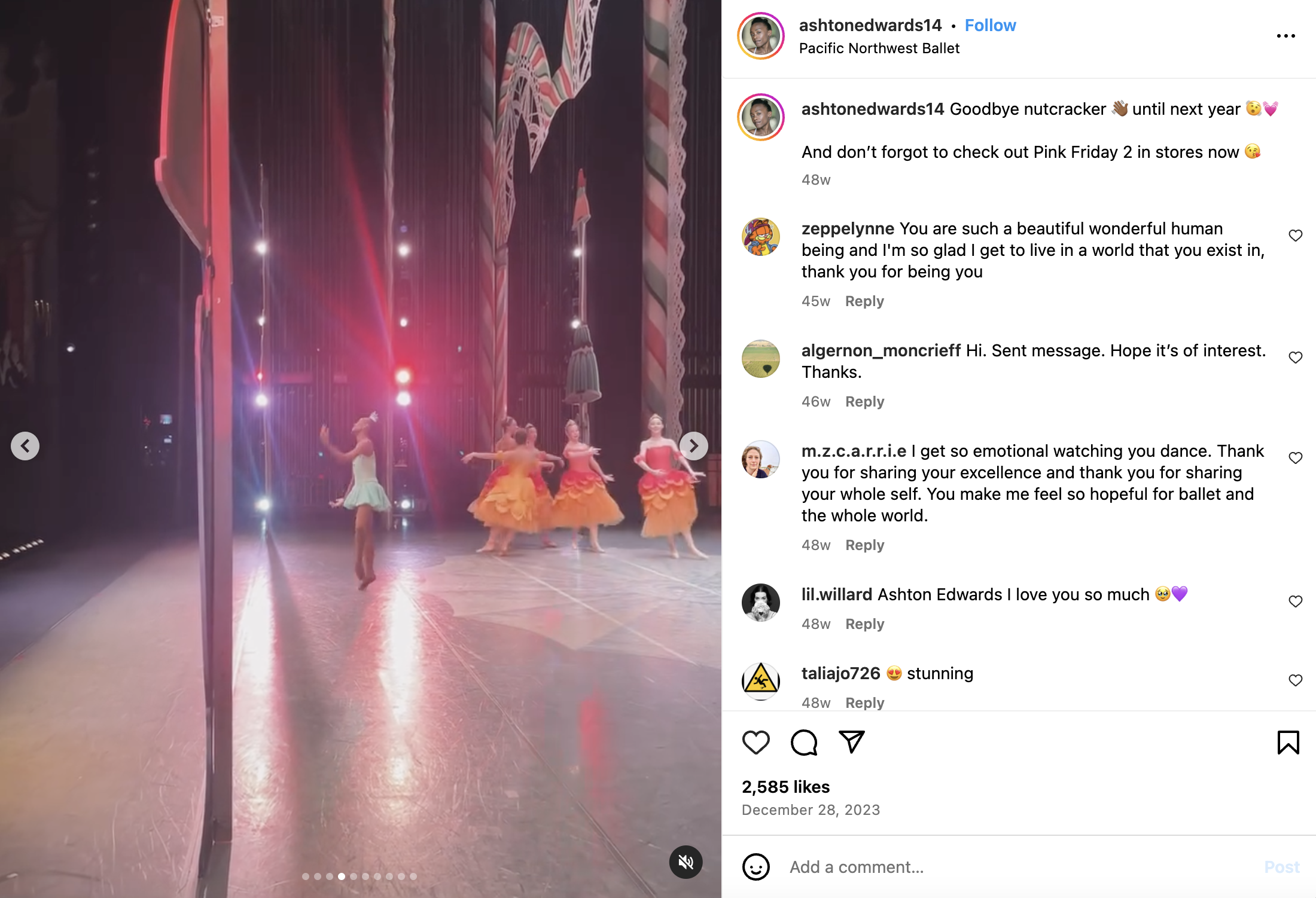Male Ballerina Seeks To ‘Ungender’ The Nutcracker Ballet By Playing Female Roles
Each year around Christmas, American families flock to productions of George Balanchine’s “The Nutcracker.”
It’s become a tradition for a reason. Pick any production around the country, and you know what you’ll get: glittering sets, exquisite dancing, and the dramatic strains of Tchaikovsky’s score.
But this year, Seattle families hoping to enjoy “The Nutcracker” may be shocked to see a male Sugar Plum Fairy pirouetting across the stage.
For the second year in a row, Pacific Northwest Ballet has cast Ashton Edwards in traditionally female roles in its Nutcracker production, The Daily Wire has learned. Edwards — a 21-year-old man who uses the pronouns “they/them” and identifies as “non-binary” — is on a mission to “un-gender” the very-structured, very feminine, world of ballet.
He has danced in the roles of the Sugar Plum Fairy, Harlequin, Green Tea Cricket, Candy Cane, and Dewdrop in Nutcracker productions in the past, according to the Pacific Northwest Ballet. Edwards is “part of a rising generation of gender nonconforming dancers questioning ballet’s rigid gender roles,” according to a 2022 New York Times profile.
“I definitely want to be an activist for the next generation, and I also want to be a light for them, to show them that it gets easier on the other side,” Edwards told the Times in 2022. That profile noted that ballet has “become synonymous” with a “fairy-tale ideal of femininity,” pointing out that “gender roles have been enshrined in its technique, particularly with pointe shoes (women dance on pointe, men don’t) and partnering (women are lifted, men do the lifting).”
Edwards and others hope to change that.
View this post on Instagram
Pictures and videos reviewed by The Daily Wire show Edwards dancing in the Nutcracker during the 2023 Christmas season, dressed in feminine leotards and skirts, wearing a crown. He is known for dancing in women’s roles en pointe, meaning on the very tips of his toes, a challenging technique that requires extensive practice and is usually performed by women.
“Until recently,” the Seattle Times reports, “the idea of a man dancing on pointe was a rarity, mostly restricted to comic effect in narrative ballets like Frederick Ashton’s ‘A Midsummer Night’s Dream’ or the all-male dance comedy troupe Les Ballets Trockadero de Monte Carlo. In a world engaged in conversation about gender and inclusivity, however, things may be changing in ballet, just a bit.”
The Pacific Northwest Ballet has not posted all of the dancer assignments for the Christmas season, but on Saturday, Edwards appears to have danced as “Harlequin” and “Green Tea Cricket,” a new addition to the ballet intended to “counter stereotypes of Chinese culture” and to dispel “anti-Asian hate.”
The Pacific Northwest Ballet did not respond to multiple requests for comment on the matter. Edwards also did not respond to The Daily Wire’s request for comment.
Some of the pictures that Edwards has promoted on his social media show his 2022 “Sugar Plum Debut,” in which he is seen dressed in a purple tutu, dancing with a matching prince. The Sugar Plum Fairy’s dances in The Nutcracker are widely regarded as the “pinnacles” of the renowned ballet, and the Sugar Plum Fairy is the queen of the Kingdom of Sweets.
The New York Times previously described Edwards as “an extraordinarily gifted and versatile performer” who is “setting an important precedent.” He is, according to the Times, “an artist assigned male at birth working routinely on pointe in a classical ballet company.”
Edwards reportedly convinced the Pacific Northwest Ballet’s artistic director Peter Boal to let him study “pointe” at the ballet school in August 2020 — a conversation that resulted in both the ballet school and the company removing gender designations from some classes and allowing students to train under the gender identity they align with.
“Sometimes you need a catalyst, and in this case that was Ashton,” Boal told the Times. “We’ve been going through our whole handbook to really ungender much of what we offer.”




